Clarice Orsini
Clarice Orsini, born in Monterotondo, presumably in 1452, was the daughter of Jacopo (or Giacomo) Orsini (1), lord of Monterotondo and other castles in the Roman Campagna, and Maddalena di Carlo Orsini (2). Her father was a renowned condottiero in the service of the popes and the King of Naples. Her mother was the sister of Cardinal Latino and Giovanni, Archbishop of Trani and abbot of Farfa.
There are no direct records of Clarice's early life or her education. The first mentions of her date back to 1467 when she was already the favored candidate of Piero and Lucrezia de' Medici as the betrothed of their son, Lorenzo (3).
The Medici family's choice to look beyond Florence for a bride was a sign of their intention to assert their influence beyond the city and its dominion. The prospect of a substantial dowry played a role, but political considerations were decisive.
Clarice married Lorenzo on June 4, 1469. The marriage was celebrated with grand festivities lasting three days. She bore nine children, including Pope Leo X (4).
Her life was short and lived in the shadow of a husband and a city that either couldn't or wouldn't understand her. She passed away in Florence on July 30, 1488.
(1) Jacopo Orsini, also known as Giacomo Orsini, was an Italian noble and lord of Monterotondo. He was Clarice Orsini's father. Jacopo was a condottiero in the service of the popes and the King of Naples.
(2) Maddalena Orsini was Clarice Orsini's mother. There isn't much information available about her, but we know she was the daughter of Carlo Orsini, Lord of Bracciano.
Lucrezia Tornabuoni was Lorenzo de' Medici's mother. She was an educated and influential woman who played a significant role in Florentine politics and in promoting the arts and culture.
(3) Lorenzo the Magnificent, Lorenzo de' Medici, was an important statesman, banker, and patron of the Italian Renaissance. He was Clarice Orsini's husband.
(4) Pope Leo X, born Giovanni di Lorenzo de' Medici, was the son of Clarice Orsini and Lorenzo de' Medici. He served as the 217th pope of the Catholic Church from 1513 until his death in 1521. He brought the splendor and extravagance of Renaissance courts to the papal court.
Clarice Orsini has been depicted in various works of art. One of the most famous is a portrait attributed to Domenico Ghirlandaio, housed at the National Gallery of Ireland in Dublin. This portrait, dated around 1494, is considered one of the most faithful representations of Clarice.
Additionally, in Monterotondo, Clarice's birthplace, an annual event called "Fasti d'Autunno" is held in October. It's a historical reenactment of events from the 15th and 16th centuries. One year's edition was dedicated to the marriage of Clarice and Lorenzo de' Medici.
The Children.
- Lucrezia Maria Romola de' Medici, simply known as Lucrezia de' Medici, was an Italian noblewoman. She was the firstborn of Lorenzo "the Magnificent" de' Medici and Clarice Orsini. She was born in Florence on August 4, 1470, and died in Rome between November 10 and 15, 1553.
- Twin Boys: Two unnamed twin boys who died shortly after birth (March 1471).
- Piero di Lorenzo de' Medici, also known as Piero the Unfortunate or the Foolish, was an Italian politician and military leader. He was the firstborn son of Lorenzo de' Medici and Clarice Orsini, and the brother of Giovanni de' Medici, the future Pope Leo X. Piero was born in Florence on February 15, 1472, and died in Minturno on December 28, 1503. Despite being groomed from childhood to succeed his father as the ruler of Florence and head of the family bank, he proved unsuitable for these roles due to his lack of charisma and an arrogant and undisciplined character.
- Maddalena de' Medici: Not much information is available about her.
- Contessina Antonia Romola de' Medici was the youngest daughter of Lorenzo the Magnificent and Clarice Orsini. She was born in Pistoia in 1478 and died in Rome on June 29, 1515. Contessina was the wife of Count Palatine Piero Ridolfi.
- Beatrice de' Medici: There is not much information available about her.
- Giovanni de' Medici, the son of Lorenzo de' Medici and Clarice Orsini, is known for becoming Pope of the Catholic Church as Leo X. Born in Florence in 1475,
Giovanni was destined for the ecclesiastical career from a young age. He graduated in canon law in Pisa and received substantial benefices, such as the appointment as abbot of Montecassino and Morimondo. In 1489, he was secretly created a cardinal, receiving the cardinal's hat in 1492 and the title of legate in the Patrimony and over the Florentine dominion.
- Luisa Contessina Romola di Lorenzo de' Medici, known as Luigia, was the eighth daughter of Lorenzo de' Medici and Clarice Orsini. Born in Florence in 1477, she died in the same city in the summer of 1488 at the age of just eleven. She was intended to marry her distant cousin Giovanni di Pierfrancesco de' Medici, later called Il Popolano, but she passed away before the wedding. Perhaps, a significant part of her marriage was symbolized in the grand painting of Pallas Taming a Centaur by Sandro Botticelli, created around 1482 - 83, as an allegory of married life. In 1485, her father had a precious book of hours illuminated for her, which is now at the Biblioteca Medicea Laurenziana.
- Giuliano de' Medici, the son of Lorenzo de' Medici and Clarice Orsini, was born in Florence in 1479. Giuliano spent part of his exile in Urbino, where he refined his education in the court. After his father's death, his older brother Piero briefly became the ruler of Florence before being ousted for his servile conduct towards the invader, Charles VIII of France. Giuliano was appointed Duke of Nemours by the King of France in 1515, through the intervention of his brother, Giovanni, who had meanwhile become Pope Leo X. He died in Florence in 1516. During his exile, Giuliano mingled with illustrious artists, literati, and courtiers. He was also a great patron, creating a diverse court of artists and literati.
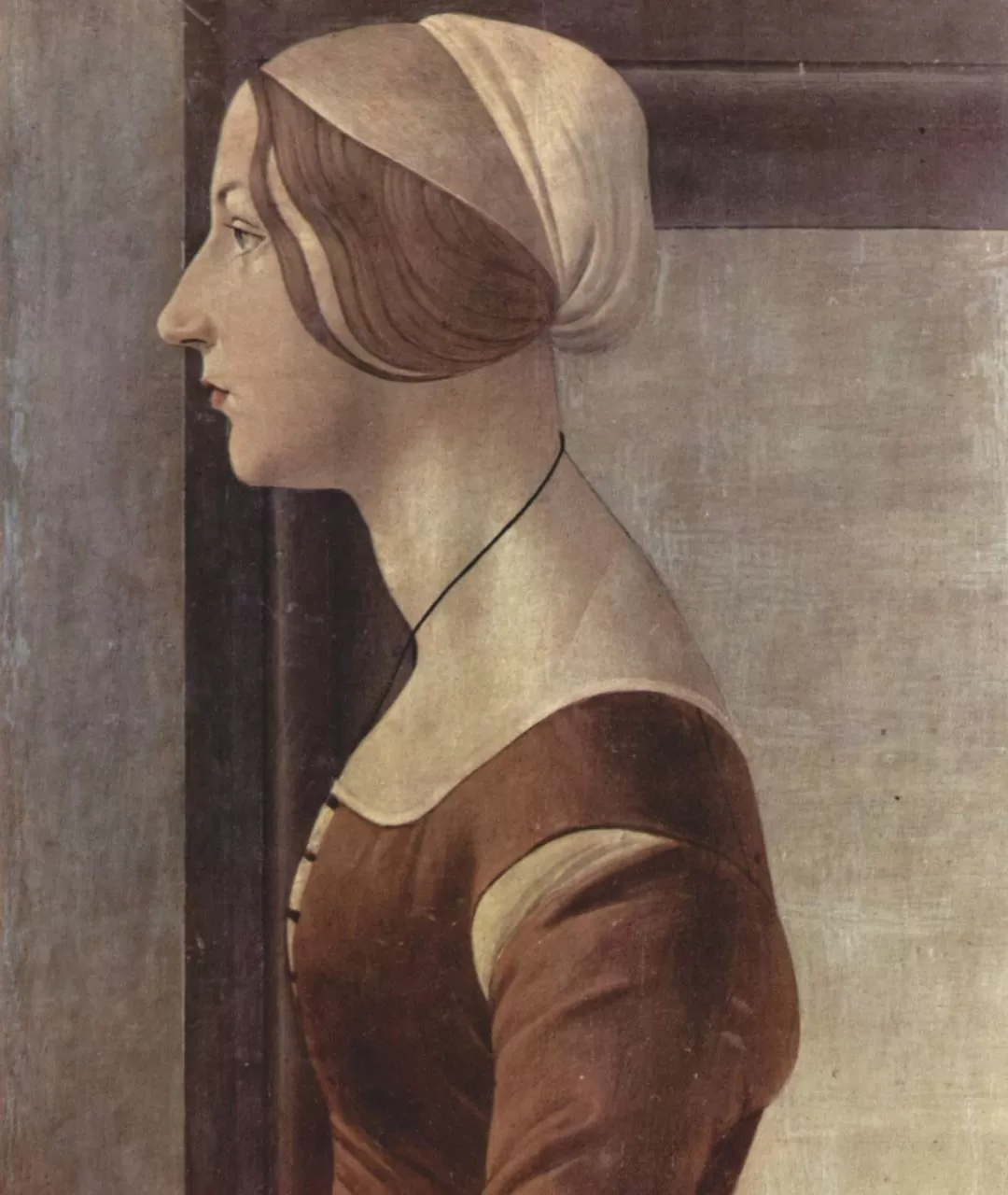
Altri articoli
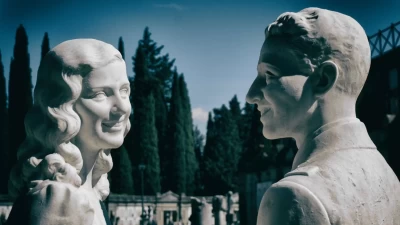
Mary and Mario
The Porte Sante Cemetery, a final rest for many, symbolizes love, loss, and the eternal beauty of Florence through its storied inhabitants.
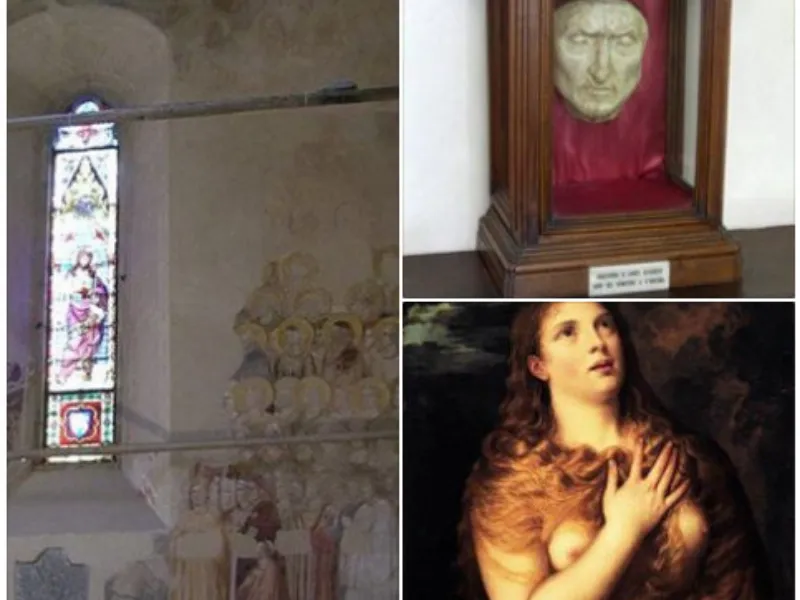
The Chapel of Mary Magdalene
In the same period Seymour Kirkup, the historian who financed works in the chapel of Mary Magdalene, was the owner of Dante's mask now preserved inside Palazzo Vecchio.
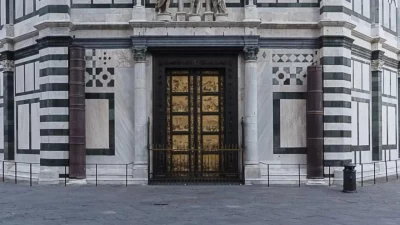
Did Florence receive a gift from Pisa
As the saying goes: " Florence is blind and Pisa is a traitor"
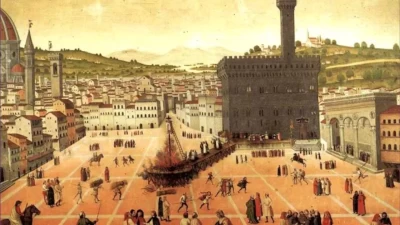
Girolamo Savonarola was burnt at the stake
The famous painter Sandro Botticelli destroyed some of his works representing nudes.

